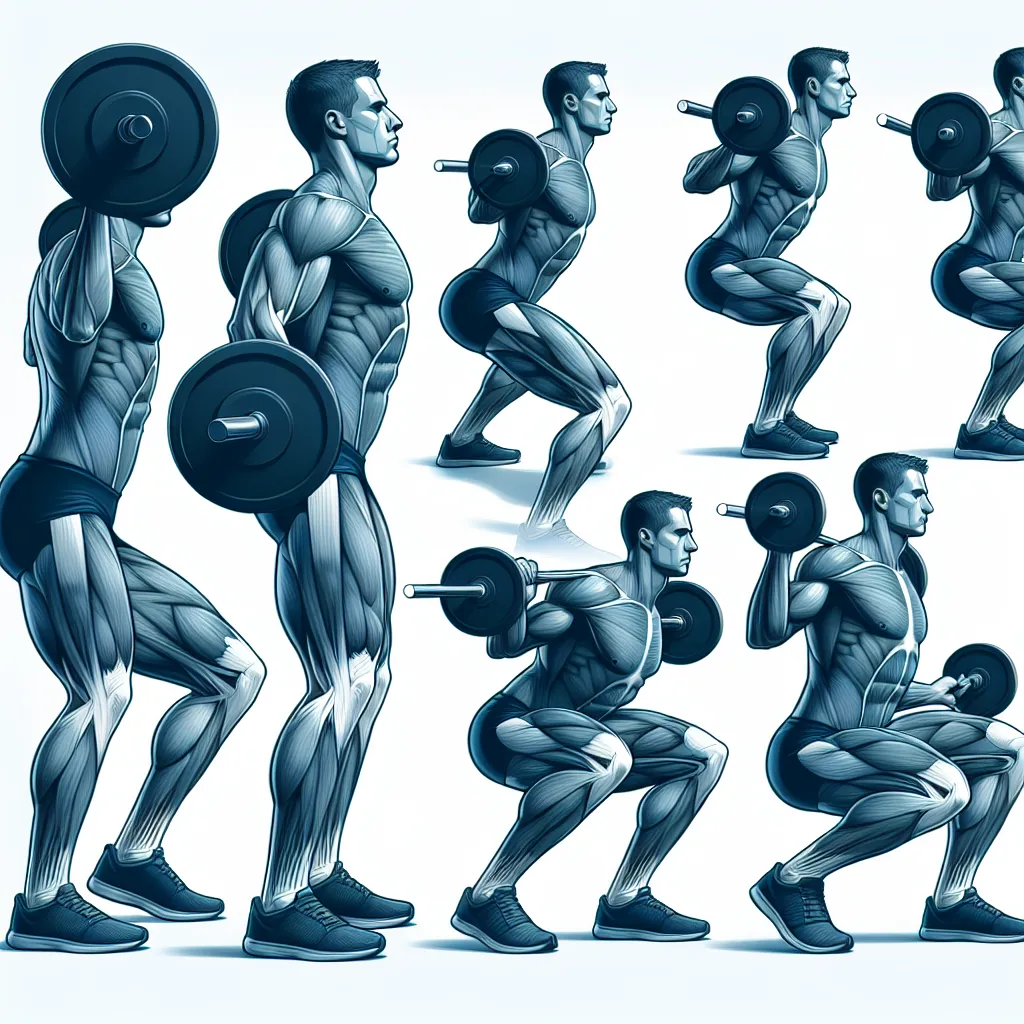5 Key Exercises for Building Stronger Leg Muscles
When it comes to building stronger leg muscles, incorporating precise techniques and key exercises is essential for achieving optimal results. Here are 5 key exercises that effectively target and strengthen the leg muscles:
1. Squats: This classic exercise targets the quadriceps, hamstrings, and glutes. Performing squats with proper form and gradually increasing the weight or resistance can significantly enhance leg muscle strength.
2. Lunges: Lunges are highly effective for strengthening the quadriceps, hamstrings, and glutes while also improving balance and stability. Variations such as walking lunges or reverse lunges can add diversity to your workout routine.
3. Deadlifts: This compound exercise not only targets the hamstrings and glutes but also engages the lower back and core muscles. Deadlifts are crucial for developing overall lower body strength and should be performed with strict attention to form.
4. Leg Press: The leg press machine allows for controlled and targeted resistance for the quadriceps, hamstrings, and glutes. Adjusting foot placement on the platform can shift the emphasis between muscle groups.
5. Calf Raises: Strengthening the calf muscles is often overlooked, but it is important for overall lower body strength and stability. Calf raises, whether performed on a machine or with body weight, can help prevent lower leg injuries and improve athletic performance.
Incorporating these 5 key exercises into your workout routine with precision and proper technique will undoubtedly contribute to the development of stronger and more resilient leg muscles.
Effective Tips for Targeting Leg Muscles in Your Workouts
When it comes to strength training, targeting the leg muscles is essential for overall lower body strength and stability. Using precise techniques and effective tips in your workouts can maximize the results and help you achieve strong, toned leg muscles. Here are some key tips for targeting leg muscles in your workouts:
1. Focus on Compound Movements: Incorporate compound exercises such as squats, lunges, deadlifts, and step-ups into your routine. These movements engage multiple muscle groups in the legs, including the quadriceps, hamstrings, glutes, and calves, leading to comprehensive muscle activation and growth.
2. Utilize Progressive Overload: Gradually increase the resistance or weight used in your leg exercises over time to continually challenge and stimulate muscle growth. This can be achieved by adding more weight, increasing repetitions, or adjusting the difficulty of the exercise.
3. Mind-Muscle Connection: Concentrate on establishing a strong mind-muscle connection during leg exercises. Focus on the targeted muscles, and ensure proper form and controlled movements to effectively engage and strengthen the leg muscles.
4. Incorporate Plyometric Exercises: Including plyometric movements like jump squats, box jumps, and explosive lunges can help improve power, agility, and muscle strength in the legs. These high-intensity exercises also contribute to overall muscle conditioning.
5. Balance Strength and Flexibility: Integrate stretching and mobility exercises into your leg workouts to maintain muscle flexibility and prevent injury. Flexibility training complements strength training, leading to well-rounded leg muscle development.
By incorporating these effective tips into your workout routine, you can effectively target and strengthen your leg muscles, leading to improved overall lower body strength, stability, and aesthetics.
The Science Behind Strengthening Leg Muscles
When it comes to strengthening leg muscles, understanding the science behind the process is crucial for achieving optimal results. The key to effective muscle strengthening lies in precise techniques that target specific muscle groups and stimulate growth. One of the primary factors in muscle strengthening is resistance training, which creates microscopic damage to the muscle fibers, triggering the body’s natural repair process and leading to muscle growth and increased strength.
Furthermore, muscle strengthening is heavily influenced by the concept of progressive overload, which involves gradually increasing the weight or resistance placed on the muscles over time. This continual progression challenges the muscles and encourages them to adapt and grow stronger. Additionally, it’s important to focus on the eccentric phase of muscle contractions, as this is where a significant portion of muscle damage and subsequent growth occurs.
Another essential aspect of the science behind leg muscle strengthening is the role of nutrition. Consuming an adequate amount of protein is crucial for muscle repair and growth, while carbohydrates provide the energy necessary for intense workouts. Moreover, proper hydration is essential for muscle function and recovery.
In conclusion, precise techniques for strengthening leg muscles are rooted in the principles of resistance training, progressive overload, eccentric muscle contractions, and proper nutrition and hydration. By understanding and applying the science behind muscle strengthening, individuals can achieve significant improvements in leg muscle strength and function.

